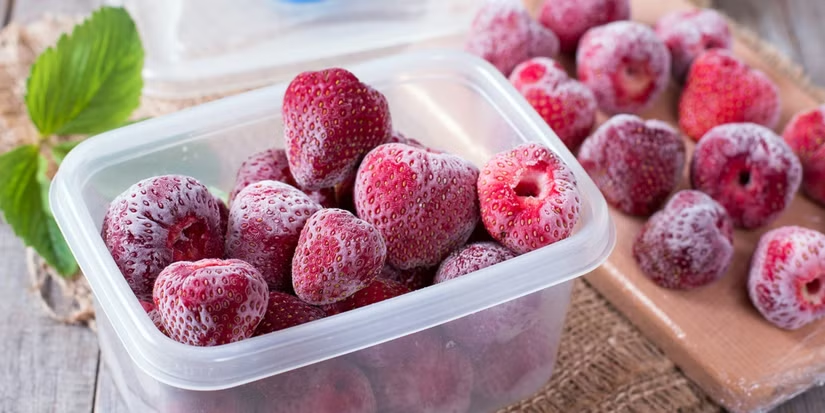
Imagine this: you’re embarking on a cross-country road trip, the open road stretching before you, and you’ve got a craving for a crisp, juicy apple. You reach into your cooler, only to find a bruised, mushy mess. Heartbreaking, right? Keeping fruits fresh during travel doesn’t have to be a gamble. Whether you’re packing for a weekend getaway, a long flight, or a camping adventure, this guide will walk you through every step to ensure your fruits stay as vibrant and delicious as the moment you packed them. From choosing the right fruits to mastering storage techniques, I’ll share expert tips, personal anecdotes, and practical advice to make your travel snacking a breeze.
Why Packing Fruits for Travel Matters
Fruits are nature’s perfect travel snack—portable, nutritious, and refreshing. But they’re also delicate, prone to bruising, spoilage, and losing their flavor when mishandled. According to the USDA, fruits like apples, bananas, and berries are packed with vitamins and antioxidants, making them ideal for boosting energy on the go. However, improper packing can turn your healthy snack into a soggy disappointment. I learned this the hard way on a hiking trip when my poorly packed strawberries turned into a sad, juicy puddle. Let’s dive into how to avoid such disasters and keep your fruits fresh, no matter the journey.
Choosing the Right Fruits for Travel
Not all fruits are created equal when it comes to travel. Some hold up like champs, while others wilt under pressure. Selecting the right fruits is the first step to ensuring freshness.
Durable Fruits for Long Journeys
For longer trips, opt for fruits with natural resilience. Apples, oranges, and pears have thick skins that protect them from bumps and bruises. According to Healthline, apples are not only durable but also rich in fiber, keeping you full during long flights or drives. Bananas are another great choice, though they ripen quickly, so pack them slightly underripe. My go-to is a crisp Granny Smith apple—it’s survived many a backpack toss without a scratch.
Delicate Fruits for Short Trips
If you’re packing for a shorter journey, you can indulge in softer fruits like berries, peaches, or grapes. These require extra care but are worth it for their burst of flavor. The Produce for Better Health Foundation notes that berries are nutrient powerhouses, but their thin skins make them prone to squishing. I once packed raspberries for a picnic, only to find a jam-like mess. Lesson learned: delicate fruits need special handling, which we’ll cover later.
Seasonal and Local Considerations
Choosing seasonal, locally sourced fruits can enhance freshness. Seasonal fruits are often at their peak flavor and firmness, as noted by the Environmental Working Group. For example, packing summer peaches for a July road trip is a win, but they’ll need protective containers. Check local farmers’ markets before your trip for the freshest picks—your taste buds will thank you.
Preparation: Setting Your Fruits Up for Success
Before packing, a little prep goes a long way. Think of it as giving your fruits a fighting chance to stay fresh.
Washing and Drying
Always wash fruits to remove dirt, pesticides, or bacteria, but do it right. The FDA recommends washing under cool running water and avoiding soap, which can leave residues. Dry thoroughly with a clean cloth to prevent mold—wet fruits are a recipe for disaster. I once skipped drying my grapes, and by day two of my trip, they were a fuzzy science experiment.
Pre-Cutting for Convenience
For fruits like melons or pineapples, pre-cutting into bite-sized pieces saves space and effort. Use airtight containers to store cut pieces, and add a splash of lemon juice to prevent browning, as suggested by The Kitchn. I love pre-cutting watermelon for beach trips—it’s refreshing and easy to eat without a knife.
Ripeness Check
Pack fruits at the right ripeness. Overripe bananas or avocados can turn mushy fast, while underripe ones may not ripen in time. The University of California Agriculture suggests choosing fruits that are firm but yield slightly to pressure for optimal travel readiness.
Packing Techniques for Maximum Freshness
Now that your fruits are prepped, it’s time to pack them like a pro. The goal is to protect them from damage while maintaining their flavor and texture.
Use the Right Containers
Hard-sided containers are a lifesaver for delicate fruits. Plastic or glass containers with tight lids prevent crushing and keep air out. For a sustainable option, try reusable silicone containers, as recommended by Treehugger. I’ve used small Tupperware for berries on short flights, and they arrive intact every time.
Cushioning and Insulation
For soft fruits, wrap them individually in paper towels or cloth to absorb moisture and cushion impacts. For longer trips, use insulated bags or coolers with ice packs to maintain a cool temperature, ideally between 32–40°F, as per USDA guidelines. On a camping trip, I wrapped peaches in a soft towel inside a cooler, and they stayed perfect for three days.
Strategic Placement in Your Bag
Place heavier fruits like apples at the bottom of your bag and lighter ones like grapes on top to avoid squishing. If you’re carrying a backpack, keep fruits away from heavy items like books. I once made the mistake of tossing oranges next to my laptop—let’s just say I had a very juicy bag by the end of the day.
Comparing Packing Methods: Which Works Best?
To help you choose the best packing method, here’s a comparison of popular techniques.
Fruit Packing Method Comparison
| Method | Best For | Pros | Cons | Cost |
|---|---|---|---|---|
| Hard-Sided Containers | Berries, grapes, peaches | Protects from crushing, airtight, reusable | Bulky, takes up space | $5–$20 |
| Silicone Bags | Apples, oranges, cut fruits | Lightweight, eco-friendly, flexible | Less protective for very soft fruits | $10–$30 |
| Cooler with Ice Packs | Long trips, tropical fruits | Maintains cold temperature, ideal for long journeys | Heavy, requires ice pack refills | $20–$50 |
| Paper Towel Wrapping | Bananas, avocados, soft fruits | Cheap, absorbs moisture, easy to pack | Not airtight, less durable for long trips | Under $5 |
This table is a starting point. For delicate fruits on short trips, paper towel wrapping is budget-friendly, but for longer journeys, invest in a cooler.
Special Considerations for Different Travel Modes
Each mode of travel—air, car, or train—presents unique challenges for keeping fruits fresh.
Air Travel: Navigating TSA and Cabin Conditions
TSA allows whole fruits in carry-ons, but cut fruits may be scrutinized, as noted by the TSA website. Pack whole apples or oranges in your carry-on, and use small containers for cut fruits. Cabin pressure and dry air can dehydrate fruits, so wrap them tightly. On a flight to Paris, I packed mandarins in a ziplock bag, and they were a juicy lifesaver during a long layover.
Road Trips: Managing Heat and Motion
Cars can get hot, accelerating spoilage. Use a cooler with ice packs for road trips, especially in summer. Place the cooler in a shaded spot, not the trunk, where temperatures can soar. The CDC warns that perishable foods left above 40°F for over two hours can spoil. My road trip to the Grand Canyon taught me to keep my cooler in the passenger seat with AC on—my grapes stayed crisp.
Train or Bus Travel: Space Constraints
Trains and buses offer limited space, so compact packing is key. Use stackable containers or silicone bags to maximize space. I once packed a small container of blueberries for an overnight train ride, and they were a perfect midnight snack.
Storing Fruits During Your Trip
Once you reach your destination, proper storage extends your fruits’ life.
Hotel or Airbnb Stays
Most accommodations have mini-fridges—use them! Store fruits at 35–40°F to slow ripening. If there’s no fridge, keep fruits in a cool, shaded spot away from direct sunlight. The Food Network suggests wrapping bananas separately to prevent them from ripening other fruits via ethylene gas.
Camping or Outdoor Adventures
For camping, a cooler with ice packs is essential. Replenish ice daily if possible, and store fruits in airtight containers to deter bugs. On a Yosemite camping trip, I kept my apples in a sealed container, and they stayed fresh despite the heat.
FAQ: Your Burning Questions Answered
How long can fruits stay fresh while traveling?
It depends on the fruit and storage method. Apples and oranges can last up to a week in a cool, dry bag, while berries may last 2–3 days with proper packing. Coolers extend freshness significantly.
Can I bring fruits through airport security?
Yes, whole fruits are TSA-approved for carry-ons in the U.S. Cut fruits may face restrictions, so check local regulations for international flights.
How do I prevent bananas from ripening too fast?
Wrap banana stems in plastic wrap to slow ethylene gas release, as advised by Bon Appétit. Store them separately from other fruits.
What’s the best way to pack fruits for kids?
Use small, colorful containers for cut fruits like apples or melons. Add a fun dip like yogurt to keep kids excited, and ensure containers are leak-proof.
Are there eco-friendly packing options?
Yes! Reusable silicone bags, beeswax wraps, and stainless steel containers are sustainable choices that keep fruits fresh.
Conclusion: Your Ticket to Fresh Fruit Anywhere
Packing fruits for travel is an art, but with the right techniques, it’s one you can master. From choosing durable apples for a cross-country flight to cushioning delicate berries for a picnic, every step counts. My own mishaps—like the strawberry fiasco or the juicy laptop bag—taught me that preparation and smart packing are everything. By selecting the right fruits, prepping them properly, and using protective containers or coolers, you can enjoy nature’s candy wherever your adventures take you.
Next time you’re planning a trip, make a checklist: wash and dry your fruits, pack them strategically, and consider your travel mode. Invest in a few reusable containers or a compact cooler—they’re game-changers. Not only will you save money on overpriced airport snacks, but you’ll also feel good knowing you’re fueling your journey with healthy, delicious fruits. So, go ahead—pack that peach, savor that apple, and let your travels be as fresh as your snacks. What’s your favorite fruit to pack for a trip? Try these tips and let me know how it goes!
